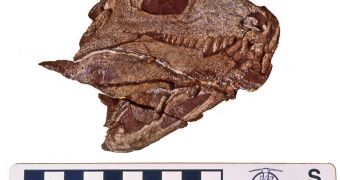Strong evidence confirms that early land vertebrates only got rid of their fish-like jaws several million years after their deciding to move out of the water and set up residence on land, one team of University of Massachusetts Amherst researchers now say.
By the looks of it, it has long been said that, while evolving from aquatic creatures to land ones, early animals first grew new limbs (i.e. legs, to be more precise) which allowed them to walk about their new surroundings.
The animals' feeding and dietary habits only got to change once the animals had already developed their new legs, previous studies further argued.
Although such theories were widely accepted by the scientific community, they were yet to be proven.
With the help of data collected while analyzing fossil jaws, the University of Massachusetts Amherst researchers can now confirm that early animals did in fact develop legs for moving on land long before they lost their fish-like jaws.
“This pattern had been hypothesized previously, but not really tested. Now we've done that. The basic result was that it took a while for these animals to adapt their jaws for a land-based diet. They stayed essentially fish-like for a long time,” specialist Philip Anderson argued.
The researchers suspect that early animals only experienced changes in the anatomy of their jaws once they started feeding on things that could only be found on land and not in the water.
“What it took to really initiate evolutionary changes in the jaw system was for these animals to start eating plants.”
After analyzing the fossil remains of 89 fossil tetrapods and their forebears, the researchers concluded that it took about 40-80 million years for the former to get rid of their fish-like looks.
A detailed account of this investigation and its findings was published in the journal Integrative and Comparative Biology.

 14 DAY TRIAL //
14 DAY TRIAL //